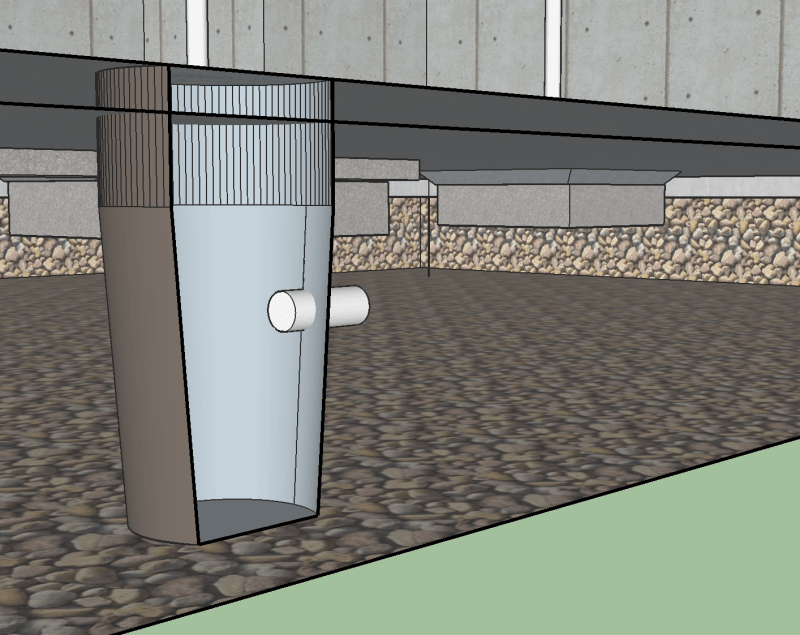Sorry for the lengthy description... The soil in our project was identified by our engineer to be Marlboro Clay and as such the engineer recommended that we over excavate the basement by 3 feet and install 2 feet of #3 stone and then 1 foot of #57 stone under the entire foundation. (1.5+ million pounds of stone) The concrete company dug away roughly 4" of the #57 stone and build the forms for the 1' high footers. Once done with the footers, more #57 stone (guessing here at 8") was used to raise the inside slab area to the height of the footer. Then the slab was poured (approximately 4" thick). So from top of the slab to the filter fabric under the #3 stone is about 4'. I purchased a couple of sump crocks and extensions to get them a bit deeper. Each crock basin is about 4' high.
The lowest opening in each of the crock basins are about 18" from the bottom of the rock. This means that there is constantly 18" of water sitting inside the 18" of #3 rock around the sides of the bottom of the crocks. I'm wondering if anyone has opinions on if I should drill additional holes in the crock basins below the hole at 18" from the bottom to try to get as much water out of the stone or if I should just leave it alone.
There is constant water collecting as we are in a low spot in the community. Just rough guess here... Slab is 1900 sq/ft, if the #3 stone displaces 70%, then there is roughly 6,400 gallons of water sitting in the 18" below the lowest hole. (Math - 1900 * 1.5 * 30% = 855 sq/ft = 6,400 gallons)
Zoeller 31-1099, 18 x 30 in. Simplex Poly-Foam Deluxe Basin
Zoeller 31-1473, 12 Riser for 18 Diameter Basin
The lowest opening in each of the crock basins are about 18" from the bottom of the rock. This means that there is constantly 18" of water sitting inside the 18" of #3 rock around the sides of the bottom of the crocks. I'm wondering if anyone has opinions on if I should drill additional holes in the crock basins below the hole at 18" from the bottom to try to get as much water out of the stone or if I should just leave it alone.
There is constant water collecting as we are in a low spot in the community. Just rough guess here... Slab is 1900 sq/ft, if the #3 stone displaces 70%, then there is roughly 6,400 gallons of water sitting in the 18" below the lowest hole. (Math - 1900 * 1.5 * 30% = 855 sq/ft = 6,400 gallons)
Zoeller 31-1099, 18 x 30 in. Simplex Poly-Foam Deluxe Basin
Zoeller 31-1473, 12 Riser for 18 Diameter Basin

